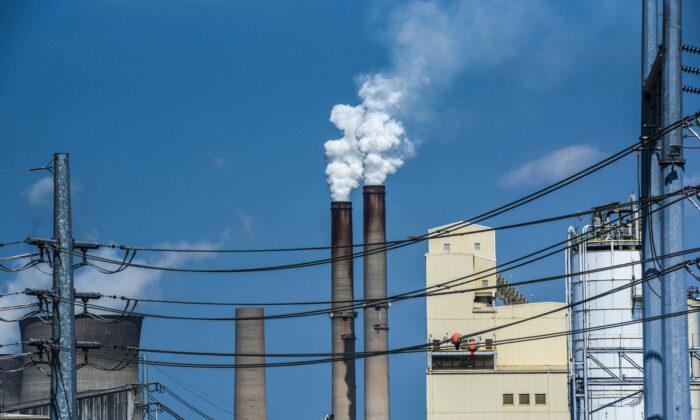Greenhouse gas emissions across the United States rose by 6 percent in 2021 following the reopening of the economy in the wake of the COVID-19 pandemic, according to data from the Environmental Protection Agency (EPA), despite the Biden administration’s aggressive push to cut down emissions.
In 2021, net U.S. greenhouse gas emissions were 5,586 million metric tons of carbon dioxide equivalent, marking a 6 percent increase due to economic activity rebounding and overall demand for electricity rising, the EPA said.
The industrial sector accounted for 24 percent of total U.S. greenhouse gas emissions in the same year, while agriculture accounted for roughly 10 percent. The commercial and residential sectors accounted for 7 percent and 6 percent, respectively, of total U.S. greenhouse gas emissions in 2021, according to the data.
Despite the annual increase, net emissions were 17 percent below 2005 levels, which the agency said was partly due to a shift toward less CO2-intensive natural gas for generating electricity and a rapid increase in the use of renewable energy in the electric power sector.
However, the agency noted that preliminary data for 2022 shows that primary energy use increased by 3 percent and emissions from energy use increased by 1 percent compared to 2021.
Biden’s Push to Reduce Emissions
Overall, U.S. net electricity production from the electric power sector increased by 3 percent. Still, emissions decreased by less than 1 percent, which the agency said was due, in part, to reduced coal use and increased use of natural gas.“In 2022, coal use decreased by about 6 percent, and natural gas use increased by about 8 percent in the electric power sector. The growth in renewable sources continued with electricity production from renewable energy use increased by about 12 percent in 2022,” the agency said.
That is despite tens of billions of dollars being spent on renewable energy production amid the Biden administration’s push to cut total greenhouse gas emissions by at least 50 percent by 2030 in an effort to tackle what he says is a “climate crisis.”
No Need for ‘Alarm Bells’
“There’s no reason to ring alarm bells,” Koonin said.According to that data, carbon dioxide levels rose by 2.13 parts per million (ppm) for the 11th consecutive year, which is roughly the same rate observed during the last decade, while methane levels increased to an average of 1,911.9 parts per billion (ppb).
“The 2022 methane increase was 14.0 ppb, the fourth-largest annual increase recorded since NOAA’s systematic measurements began in 1983, and follows record growth in 2020 and 2021,” NOAA said. “Methane levels in the atmosphere are now more than two and a half times their pre-industrial level.”
Nitrous oxide emission rose by 1.24 ppb to 335.7 ppb, which is tied with 2014 as the third-largest jump since 2000 and is also a 24 percent increase over pre-industrial levels, according to NOAA.
“The observations collected by NOAA scientists in 2022 show that greenhouse gas emissions continue to rise at an alarming pace and will persist in the atmosphere for thousands of years,” said NOAA Administrator Rick Spinrad.





